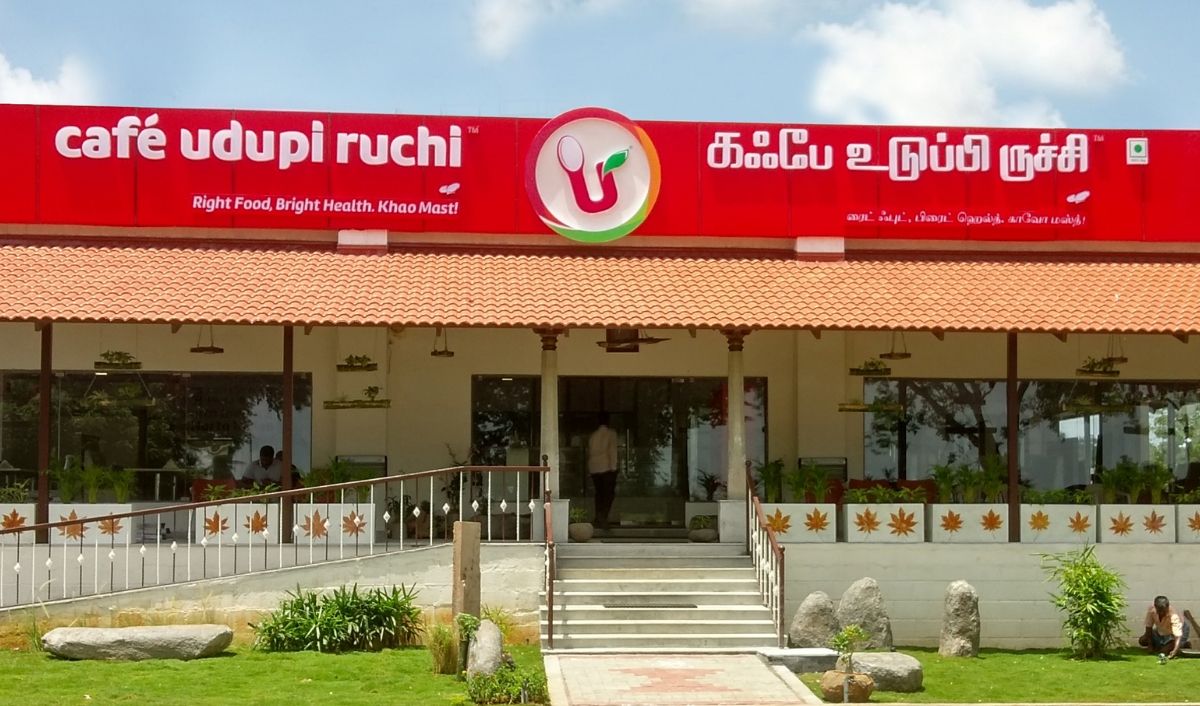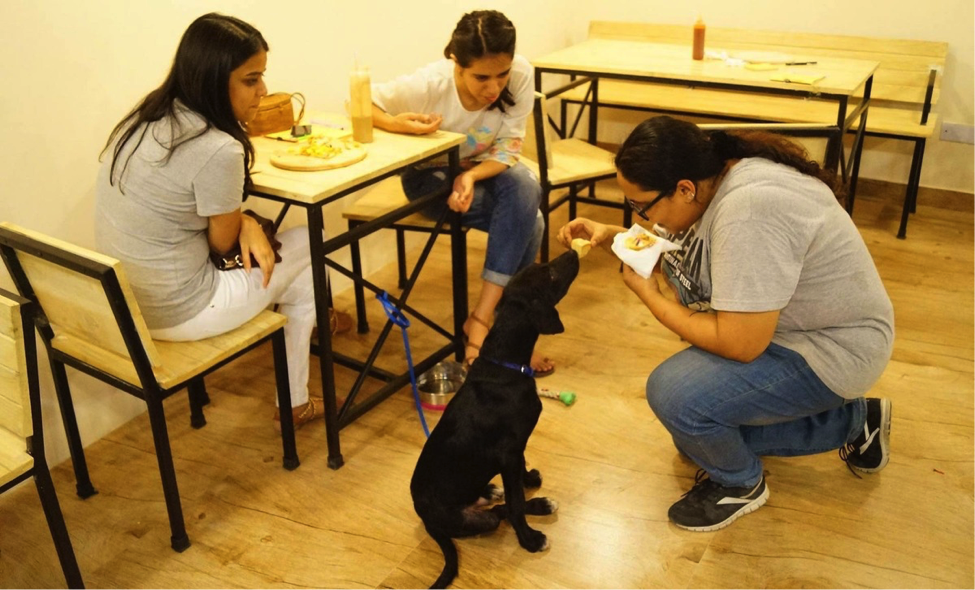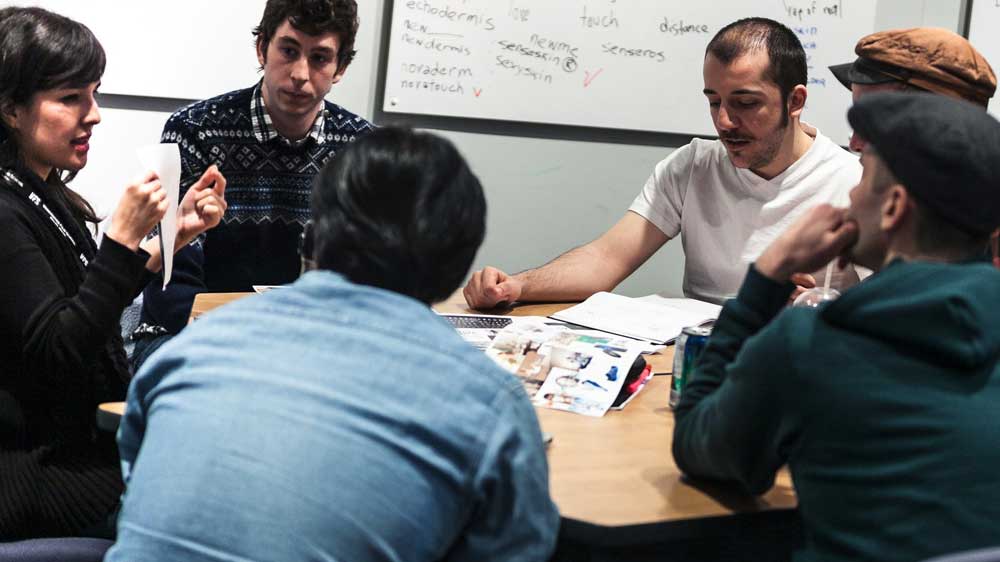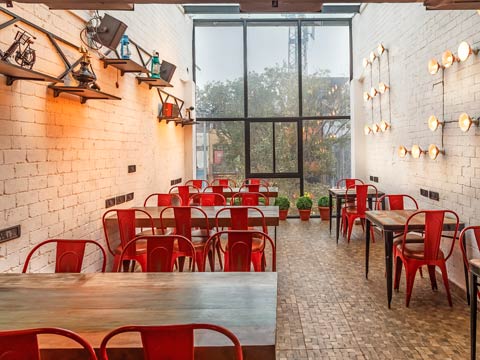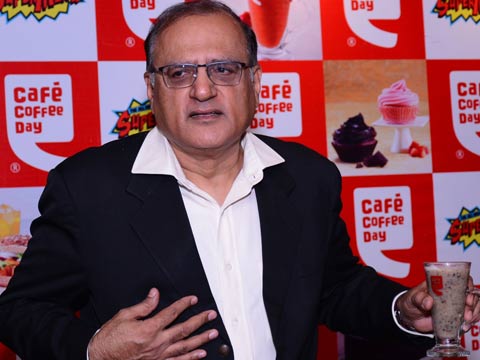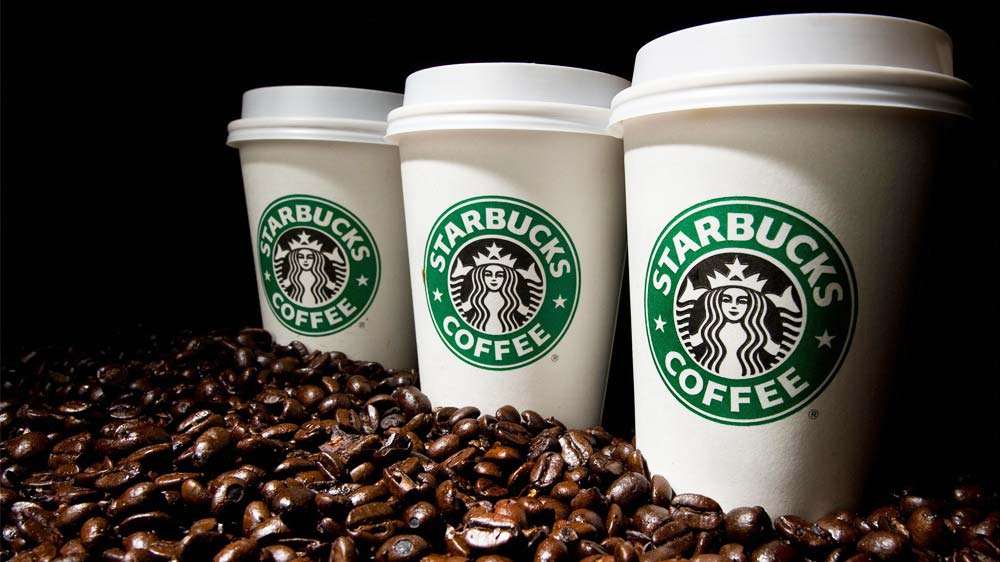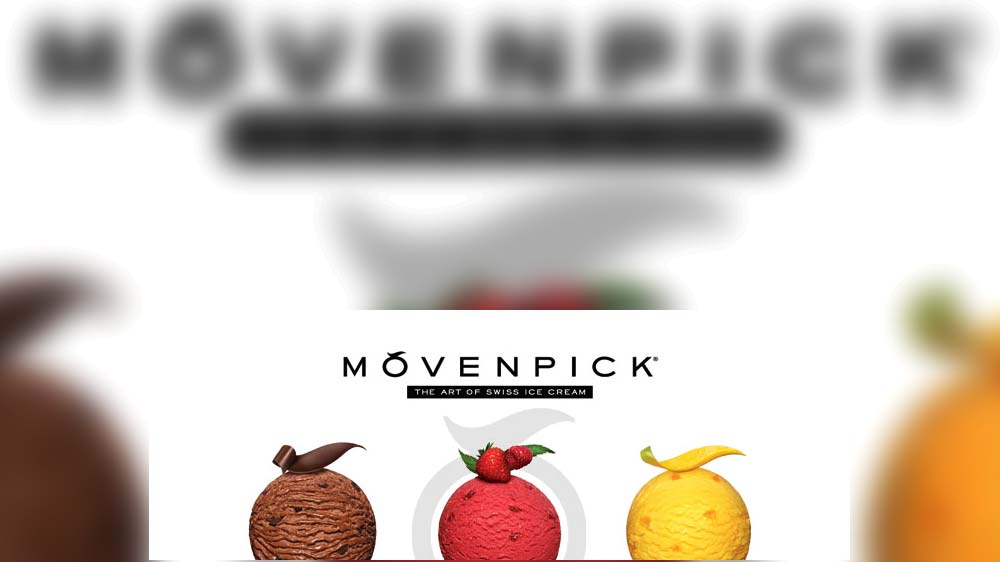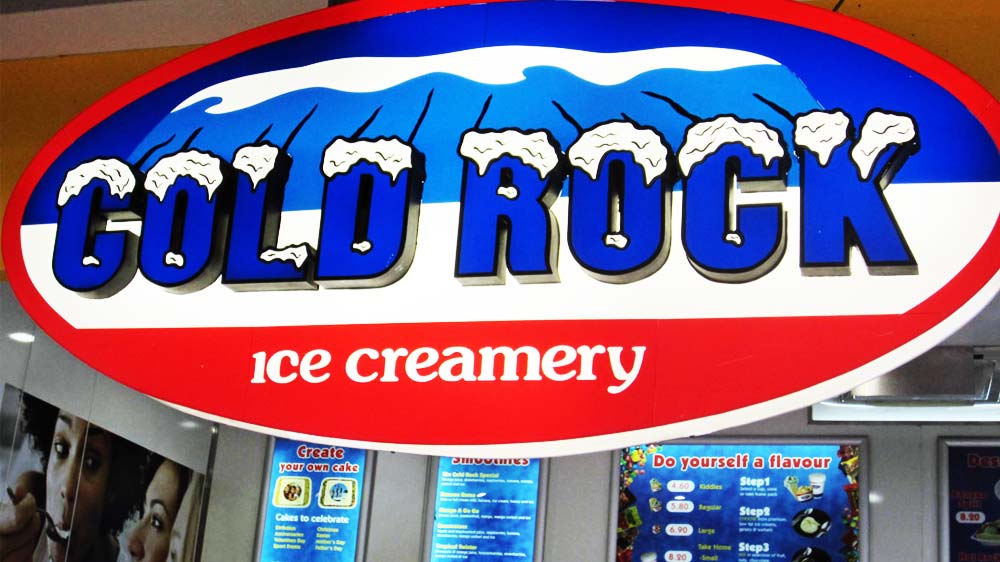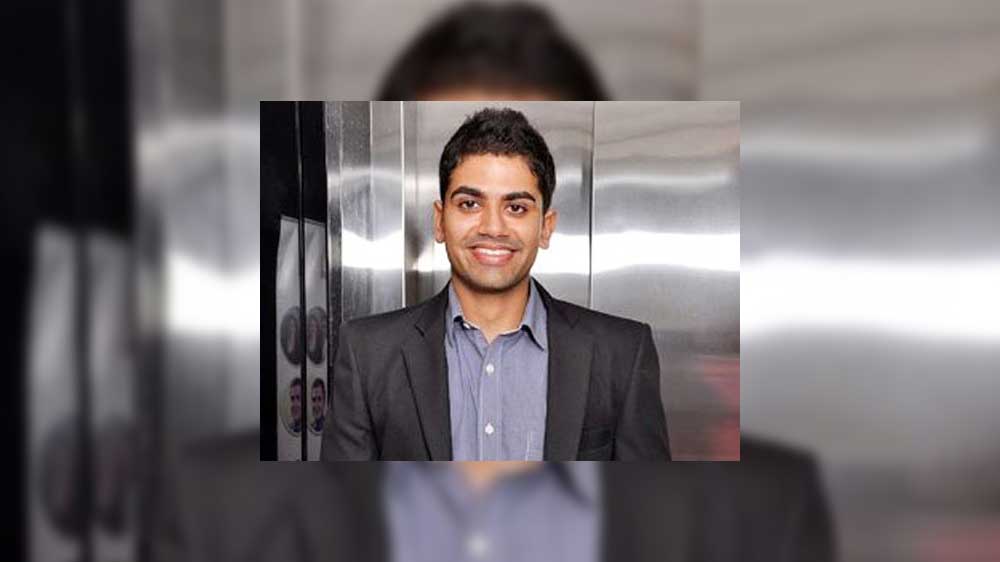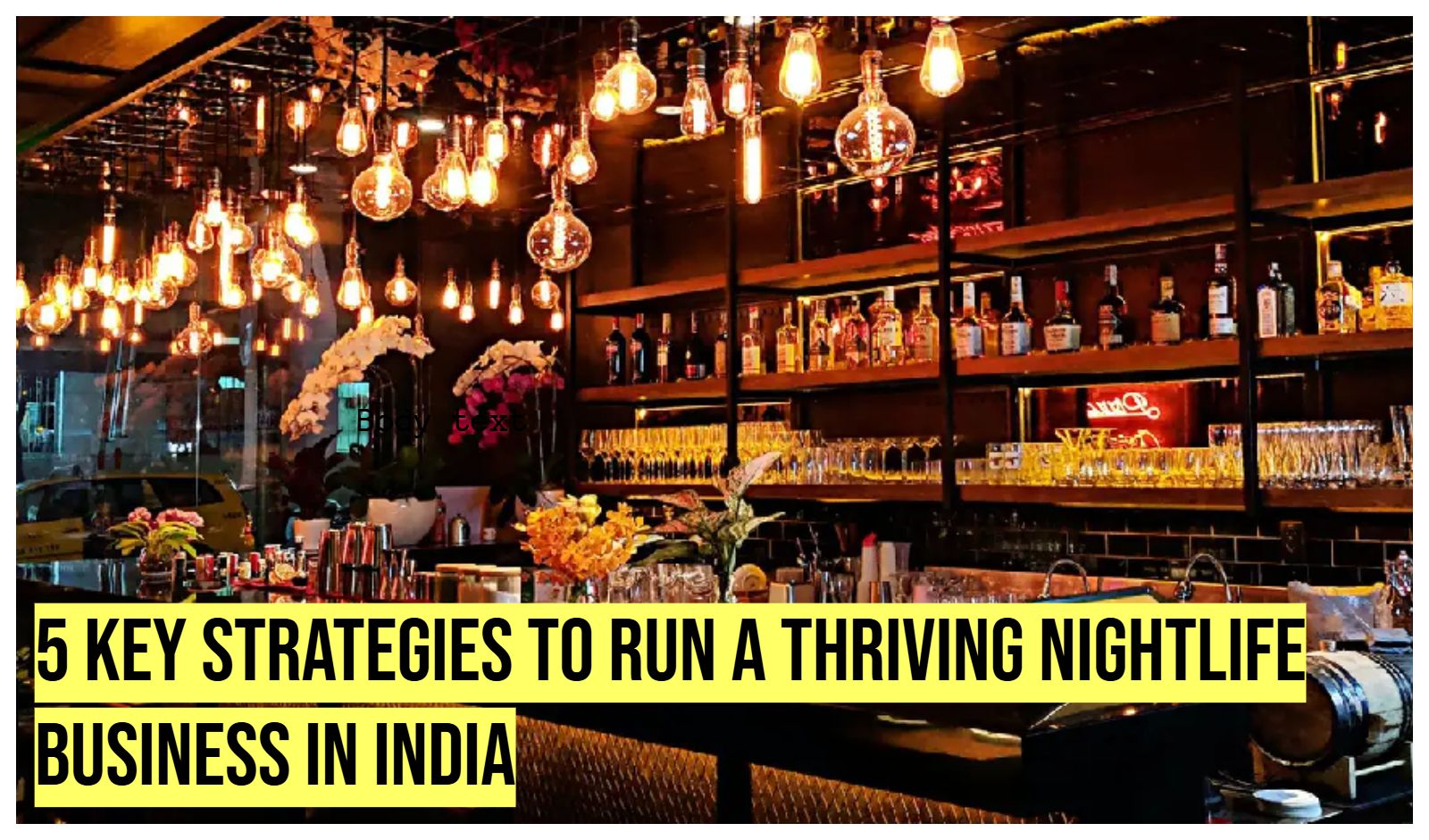
Opening a café is an exciting journey filled with big dreams and creative ideas. However, when you're working with a limited budget, designing the interior can quickly start to feel like a challenge. From choosing the right furniture to setting the vibe of the space, every detail can seem costly. But here’s the good news—you don’t need to spend lakhs to make your café look attractive, welcoming, and stylish.
With smart planning and a bit of creativity, even a small café can be transformed into a beautiful, customer-friendly space. It’s not about how much you spend; it’s about how you use what you have. Recycled furniture, DIY décor, simple lighting tricks, and well-chosen themes can go a long way in building the right atmosphere. Your café can be the perfect spot for customers to relax, work, or hang out with friends. If designed thoughtfully, it can even become an Instagram-worthy destination that people love to share online. With the right design tips, your low-budget café can offer big-time charm, helping you attract more footfall and loyal customers.
Read more: 6 Benefits of Drinking Black Coffee
11 Best Commercial Coffee Machine Brands for Café: Top Picks & Buying Guide
Here are 10 affordable café interior design ideas that are high on creativity and low on cost.

1. Secondhand, First Class
You don’t need brand-new furniture to make your café stand out. Visit local flea markets, secondhand furniture stores, or online platforms like OLX, Facebook Marketplace, or Quikr. You’ll find chairs, tables, and shelves that cost a fraction of new ones. A little polish or paint can make them look fresh.
Tip: Mix and match furniture pieces to create an eclectic, homey vibe. This gives character to your café and keeps costs down.
2. Let There Be (Cheap but Chic) Light
Lighting plays a key role in setting the right mood for your café. Soft, warm lighting instantly creates a cozy and welcoming vibe. You don’t need to invest in costly fixtures to achieve this. Simple options like fairy lights, hanging Edison bulbs, or mason jar lamps can add charm and warmth to your space. These budget-friendly choices not only enhance ambience but also make your café look stylish and inviting.
Tip: Add dimmable LED lights or string lights above tables to create a romantic evening feel without spending much.
3. Paint it Like You Mean It
A coat of paint can change the entire look of your café. Choose colors that reflect your brand vibe—earthy tones for calmness, bright colors for a youthful feel, or monochrome for elegance. You can also paint one wall in a bold color as an accent wall. Another fun idea is a chalkboard wall for daily specials or customer doodles.
4. Upcycle, Baby!
Turn everyday junk into creative pieces. Wooden crates can be stacked to make shelves. Old wine bottles can hold flowers. Tin cans become cutlery holders.
- Tip: Visit scrap yards or ask local carpenters for leftover materials. You’ll be surprised at how much décor you can build from items that cost nothing.
5. Say It with Signs
Your café signage is a big part of your branding. Instead of costly digital signs, go for wooden boards, handwritten chalk signs, or wall decals. Display quirky quotes or a daily “pun of the day” to keep things fun and personal.
- Example: “Espresso Yourself” written on a wooden board gets attention and makes people smile.
6. Green is the New Black
Adding indoor plants is one of the easiest ways to make your café look fresh and welcoming. Use small potted plants, succulents, or even hanging planters to fill corners.
- Tip: Snake plants, pothos, and money plants are low-maintenance and survive well indoors. Buy from local nurseries instead of big chains to save more.
Know more: Restaurant vs. Café: What Truly Sets Them Apart?
7. Tiny Café, Big Personality
Even if your space is small, smart design choices can make it feel open and inviting. Use wall-mounted shelves instead of bulky storage. Go for foldable or stackable furniture. Place mirrors on walls to reflect light and make the café look bigger.
Personal Tip: One Delhi café placed mirrors with warm lighting on one side of a narrow room. It made the space look double its size.
8. DIY or Die Trying
Handmade décor adds personal charm. Try macramé wall hangings, framed quotes, or recycled art. Host a local art contest and display the winners’ art on your café walls.
Tip: DIY projects not only save money but also give your café a story to tell.
9. Theme it Like a Dream
Having a theme helps customers connect with your café. It could be rustic, bohemian, vintage, or even travel-themed. Once you choose a vibe, pick colors, materials, and props that match.
Example: A beach-themed café in Goa used ropes, surfboards, and seashells—all locally sourced and low-cost.
10. Scent-sational Strategy
The way your café smells can leave a lasting impression. Good smells make people feel good and increase chances they’ll return.
Tip: Brew coffee beans at regular intervals. Place cinnamon sticks or essential oil diffusers in corners. Baking fresh cookies or cakes daily helps too. Scents create an emotional connection with your space.
Also check: Outdoor vs. Indoor Dining: Which Experience Stands Out?
Instagram-Worthy, Wallet-Friendly
If you want customers to post about your café on social media, design a dedicated photo corner. It doesn’t have to be big—just one small, eye-catching spot. Place a stylish chair, a textured or colorful statement wall, and a fun neon quote to catch attention. Use soft, warm lighting to make photos look better. Add simple but effective props like an old typewriter, a guitar, or a vintage clock. These visual elements encourage customers to take selfies and tag your café online. It’s a smart way to get free marketing, grow your brand presence, and attract more visitors, especially from platforms like Instagram and Pinterest where good aesthetics matter. A photogenic corner can turn footfall into followers.
Music, Mood, and Magic
Music plays a big role in shaping your café’s atmosphere. A well-curated playlist can instantly change the mood and enhance customer experience. You don’t need an expensive sound system or a DJ. Use affordable music platforms like Spotify, Gaana, or YouTube Premium to stream high-quality tracks without interruptions. Choose your music based on the time of day and your target crowd. Soft jazz or acoustic works well for lazy afternoons. Indie, retro, or soulful music can create a cozy vibe in the evenings. Lo-fi or ambient music is great for customers working on laptops. Keep your sound levels comfortable, not loud. A thoughtful playlist can create emotional connections, encourage longer stays, and even help define your café’s brand identity. Keep speakers small but powerful. Mount them on the wall to save space and keep them safe.
Check more: 5 Best Coffee Beans in the World: Sips of Heaven You Can’t Miss
Top Vietnamese Coffee Brands Making Trends in India
Café Goals on a Chai Budget
Many successful cafés in India began with small setups and tight budgets. They used simple, cost-effective materials like recycled wood for tables, iron chairs for seating, and old or mismatched crockery for a quirky touch. Instead of investing heavily in interiors, they focused on creativity, ambience, and a clear brand story. Personal touches like handwritten menus, local artwork, or community boards helped them stand out. Over time, their focus on authenticity, good service, and memorable experiences earned them a loyal customer base. Some of these cafés have now expanded to multiple locations. Their journey proves that a modest start, when combined with smart design and consistent branding, can lead to long-term success and solid revenue in the café business.
Customer Seating Hacks
Comfortable seating is key to making your café inviting, but it doesn’t have to be expensive. Instead of splurging on premium sofas or custom-made chairs, you can use smart, affordable options like floor cushions, wooden benches with soft padding, or even secondhand furniture. Mix and match different seating styles—like pairing low stools with tall tables or placing beanbags in a quiet reading nook. Create cozy corners with rugs and cushions where people can relax, work, or enjoy long conversations. Customers often return to cafés where they feel physically comfortable and emotionally at ease. A well-thought-out seating plan that blends comfort and function will not only save you money but also enhance your café’s personality and customer retention.
The Bottom Line!
Designing a beautiful café doesn’t require a massive budget—it just needs smart planning and creative thinking. You can achieve a stylish, inviting space by focusing on the things that truly matter: warm ambience, clean surroundings, comfortable seating, and a unique touch that reflects your personality or theme. Customers are drawn to places that feel good, not just look expensive. With thoughtful lighting, DIY décor, and clever use of space, even a small café can become a favorite neighborhood spot. A well-designed interior encourages people to stay longer, spend more, and return often. It also builds word-of-mouth and online buzz without any extra advertising cost. Use these low-budget café design ideas to create a space that’s welcoming, functional, and memorable—even if you’re working on a tight, shoestring budget.

Café Delhi Heights has given many firsts to the country. From being one of the first Indian restaurant to introducing café culture and making casual dining more culture. Not just that, it also became the first café to open at historic Red Fort. Founded by Vikrant Batra and Sharad Batra 12 years ago in Delhi, Café Delhi Heights has become a go-to restaurants for customers in the region and gradually across the country. It aims to provide a comfortable and happy dining experience for customers of all generations by offering a diverse range of food options to cater to different palates. Restaurant India spoke to Vikrant Batra, Co-founder, Cafe Delhi Heights on completion of its successful 12 years. Excerpts from the interview:

What was the inspiration behind starting Cafe Delhi Heights, and how has the brand evolved since its inception?
The inspiration comes from our family. Being a joint family, where all three generations like to go out together, we always used to struggle to decide which place to go to. To find a place where our mother and daughters both will be comfortable to go. A place hip enough for our sons yet has a few traditional dishes on the menu to make my dad happy. We could never find a place that was easy going for us to spend quality time together as a family and have quality food at the same time. To answer all these questions we got the answer called Cafe Delhi Heights.
There were many ups and downs in this journey. We learned from our mistakes and the feedback given by our customers. We kept evolving ourselves to be a café where all three generations can eat together. And, today we are running more than 34 outlets PAN India and aims at growing and serving our customers good food.
How does it feel on the 12th anniversary of the brand?
It definitely feels great because we have worked really hard on the accomplishment of our goals. I have given all that I have to Café Delhi Heights. My vision to introduce Café Culture clicked with the audience 12 years back and we as the brand are growing year after year. We started our Journey from 1 outlet at Crosspoint mall, Gurgaon. Today we have 40 outlets and we are planning to open up more. Right from Introducing Café Culture, to Casual dining culture to Juicy lucy burgers and more, We are certainly content to offer our customers the best of experience and introduce more innovations, outlets, consistency and love.
Milestone achieved
The café chain has gained popularity and established a strong presence in several cities across India, including Delhi, Mumbai, Chandigarh, Pune, Gurugram, Noida, Ludhiana, Bangalore, and Lucknow. It started with a single outlet at Crosspoint Mall in Gurugram and has now expanded to 35+ outlets. The company plans to continue its growth by opening 10 new outlets every year. One notable achievement of Café Delhi Heights is being the first-ever restaurant located inside the historical monument, Red Fort. We are about to achieve a milestone of selling 6 lakhs (600,000) of Juicy Lucy burgers.

What’s your expansion plan?
Café Delhi Heights has experienced a phenomenal journey over the past 12 years, and we aim to continue this growth for the next 12 years as well. The focus has been on aggressive expansion for the last 5 years, and this expansion strategy will continue in the coming years. We plan on opening 12 more outlets soon.
The goal is to be present wherever there is a demand for the brand, regardless of the city, tier and classification.
Maintaining Quality and Consistency
"I always believe in maintaining the image of the brand. For me, more than opening up outlets, the important thing is maintaining the quality and consistency of our brands. Consistent Marketing, consistent quality checks, consistent team visits, reporting, customer feedback and marketing of each new outlet as the new brand keep us intact and in sync with the competitiveness of the market."

How are you celebrating 12 years of success?
We have created very special Archive menu which consists of our all special dishes like Galouti Kebab, Country style crunchy cottage cheese chilli, Mumbai Vada Pav, Paneer Tikka Kathi Roll, Juicy Lucy burger, Delhi burger, OPen chicken burger, Classic fish n chips, Grilled chicken breast, Grilled sole fillet, CDH special Khao Suey veg, Pasta Aglio E Olio, Rajasthani Laal Maas, Famous thai curry green etc The exciting part is that all these dishes are priced at actual prices of 2011. So, celebrate the glory of Original dishes at Original prices.

Mumbai has got its new space where one can find the calm within the chaos. Located at Bandra, the newest Insta-worthy cafe, Grounded, is now open in the bustling neighbourhood of Bandstand.
As the name suggests, Grounded is simple in nature but holds a lot of value to its customers who can come, converse and share their experiences over their favourite brews, food and desserts.
This complemented by the sea breeze and sounds of the waves creates a tranquil ambience at the cafe.
The brainchild behind this new establishment is India’s youngest entrepreneur in F&B - Yuvika Wadhawan.
Yuvika, fuelled by her passion for food and baking since the age of 7, has curated the menu at Grounded. With the desire to bring uncommon flavours to the plate, she has crafted a delectable dessert menu that is set to swoon anyone who walks in.
The food menu has been designed keeping in mind the cafe’s audience and offers dishes that can be enjoyed throughout the day. On the menu, one will find dishes like Californian Benedict, benedict but with a twist, fresh poached eggs on a croissant with in-house garnish; New York-style B**f Burger, organic veggies, chipotle chilli and marinated patty served in a house made burger bun; and Spiced Chicken Stuffed Buns, Minced chicken in their flavourful sauce, stuffed in homemade buns to name a few.
The food menu is complemented with an extensive coffee menu, made with beans sourced from select estates and different roasts, to offer an immersive coffee experience. The brews offer a unique range of flavours and an unparalleled experience that this neighbour is yet to witness.
Designed with a blend of Greek and Mediterranean influences, the space follows a unique approach. It is accented with a burst of blue color and muted tones. A key feature of the cafe is its signage, which conveys a modern and innovative concept in an eye-catching manner.
Adding to the wonderful aesthetic of the cafe is the terrazzo countertop with its attractive colour and pattern. The glass ceiling floods the space with soft natural sunlight. As the evening draws closer the soft glow from ambient lighting adds a comforting atmosphere to the space making it more welcoming.

Tata Starbucks Private Limited today celebrated the opening of its 200th store in India, in Amritsar, Punjab – its first location in the golden city.
It’s entry into the city of Amritsar marks an important milestone that commemorates eight years in India and highlights the company’s long-term commitment to growth in one of Starbucks fastest-growing markets globally.
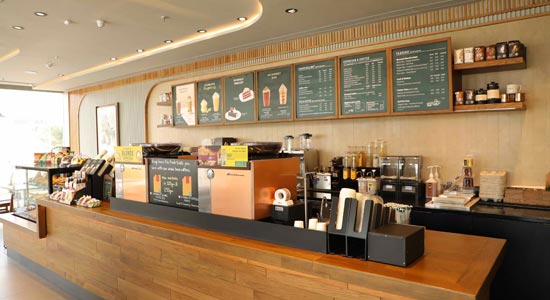
Also Read: Starbucks enters Lucknow, opens two stores in the city
“Opening the doors to our 200th store in Amritsar is a proud moment for our partners (employees) and I want to thank them for their passion and commitment as we expand in this vibrant region,” said Navin Gurnaney, CEO, Tata Starbucks Pvt. Ltd.
The new Starbucks store, located on the sprawling Ranjit Avenue, blends local art and design with Starbucks coffee heritage.
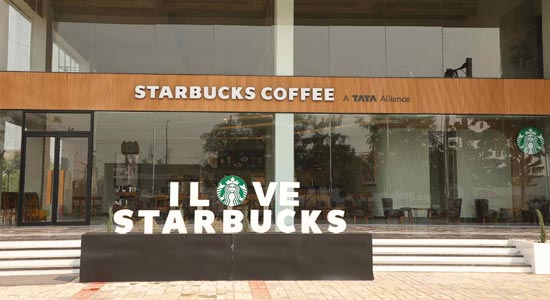
Inspired by local coffee-growing communities, the store features a picturesque ceiling that mimics the undulating landscape of the region’s coffee farms, lit with a warm glow that accentuates its contours and curved lines.
Starbucks also worked with local artisans to create bespoke pieces that celebrate the community’s creativity and collaborative spirit. The space features two customized artworks created by local artists and a colourful tapestry handcrafted by local weavers.

“Our goal with the Amritsar store is to create a welcoming third place that is safe, familiar and convenient. We are delighted to introduce the premium Starbucks experience to customers in Amritsar and create moments of connection as we share our passion and knowledge of coffee,” added Gurnaney.
Blending Starbucks passion for artistry with its vision for a more sustainable future, the store features Tata Starbucks first-ever upcycled art installation in India – the iconic Siren painted on handcrafted paper using coffee grounds.

Also, customers in Amritsar can choose from an extensive range of Starbucks beverages, including the newly launched Starbucks® Diwali Blend and Honey Turmeric Latte.
May Interest: Tata Starbucks Introduces Diwali Blend to Celebrate Coffee Heritage
In celebration of the 200th store in India, the new Starbucks store in Amritsar will offer 200 customers 50 percent off on a Venti-sized handcrafted beverage between October 22, 2020 and October 26, 2020. (Terms and conditions apply)
Customers can also join the My Starbucks Rewards™ loyalty program. Through My Starbucks Rewards™, members earn Stars for eligible purchases of coffee, food, drinks and merchandise, all of which customers can enjoy in-store along with free Wi-Fi access.

It all started when S.R. Rao Sahib was on a business meeting in Mumbai. “After the meeting, around 4 pm, I was searching for pav bhaji at a restaurant. The food item wasn’t available as the chef, who was an expert in making pav bhaji, had left.” Sri Family Group was already specializing in Easy-To-Cook mixes prepared through Dry Blend Technology. This incident triggered the idea of running a restaurant where food can be made through “our ready-to-make mixes, therefore, we would not require any skilled chef”.
Sri Family Group of Companies started in 1999 by Lalitha Rao Sahib. A Mechanical Engineer by qualification, Lalitha was awarded Women Leader of Tomorrow by ET Now and IndiaMart.
In an exclusive interview with Restaurant India, S.R. Rao Sahib, Director of Sri Family Group, tells it all about his restaurant business Café Udupi Ruchi.
The Story Behind Starting Café Udupi Ruchi
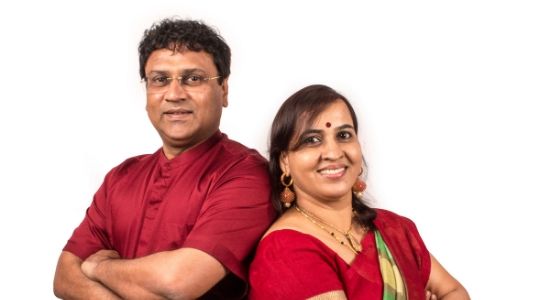
I started my career in 1983 with Voltas, handling Amul and Rasna. In 1999, I and my wife Lalitha Rao Sahib decided to start our own venture; she is, basically, from Udupi. We started with the nutrition supplement and were the sole manufacturers of Sunfeast pasta, Yippie pasta, Ashirvad rava idli for ITC for pan India during 2003-2016. The Sri Family Group also got associated with Dr Batra’s, Walmart and Elder Pharmaceuticals; we have our own R&D Center where we develop the product and manufacture for them on a long-term basis.
From 2011-2014, 87 vegetarian restaurants got closed in Mumbai because of the shortage of skilled labours; the UK alone requests over 1.2 Indian curry chefs. While the demand is increasing, there is also a shortage of supply. Back then many reports of Udupi concept restaurants closing down were rotating. We thought to rejuvenate that brand. Another thing we noticed that the younger generation was eating a lot of junk food. That’s how and why we came up with the concept of Café Udupi Ruchi. To give it a modern twist and attract the new-age diners, we gave the modern look and feel to our café, but the food we serve is traditional.
The Growth of Café Udupi Ruchi
We started Café Udupi Ruchi’s first outlet in 2014 in Bengaluru. We promoted it as the world's first chef-less vegetarian restaurant. We keep the freshness alive by adding vegetables. We use Curcumin, extracted from turmeric, to use it as a colouring agent in food. We don’t sell any beverages at any of our outlets neither water bottles. Today, we have eight outlets in Delhi-NCR.
In the South, we have at Avinashi highway (Pondicherry), Bangalore-Mangalore Highway, Trichi; we are planning to open one in Hyderabad as well.
Innovations at Café Udupi Ruchi
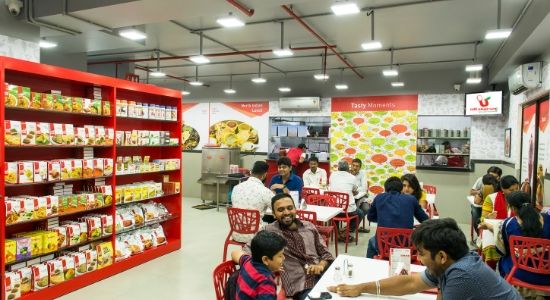
We are completing our fifth year in June this year. Along with more outlets, we will launch new products. We have software, Epic, that calculates the preparation time of each and every product, food delivering time; it’s in-house software.
Our maximum sales come between 9 to 11 pm as many vegetarian restaurants close by that time. Because of the technology we use, it’s easy for us to produce idli even at the closing time; we get to deliver it in nine minutes.
With technology, we are also helping curb the food wastage menace. Backward integration is done up to the factory level.
The software also calculates the orders for the previous year or week-wise data on consumption or food ordering. That’s how we prepare ahead. For example, last Tuesday if we sold 100 plates of idli, so the same day we will prepare 50 idlis in the morning. We have only 0.7% food wastage; controlling wastage to 1% is a surplus task.
The most-selling dish in South – Idli and Dosa, rava dosa and rava idli and thali items during lunch; The most-selling dish in North is Idli, Dosa and rice bowls.
The people in the 17-30 age group frequently visit our place. Families and other visits too but younger generation visit often.
Restaurant Models
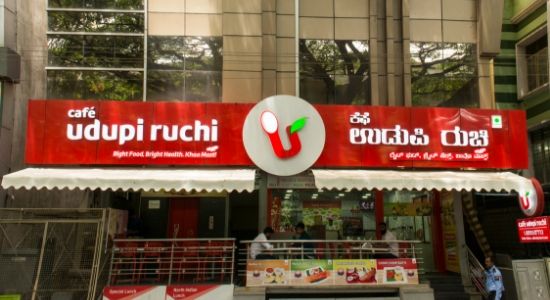
The restaurant runs on four business models - kiosk, express plus, gateway and highway.
The first is kiosk model – the area required is 100-220 square feet at the investment of Rs 12 to 14 lakhs; it requires about four to five people for operation; the ROI is 14-15 per cent.
The second is Express plus model – the area required is 600 to 900 square feet at the investment of Rs 20 to 32 lakhs; it is 10-12 seater. The ROI is 10-12 per cent.
The third is Cafe model –the investment required is 60 to 70 lakhs; it is more than 15 seats. The ROI is 10-12 per cent.
The fourth is the highway model – the investment cost lies between Rs 80 lakhs to 1.3 crores. The ROI is 9-10 per cent.
This excludes the franchise fees. The return on investment for the kiosk business model is 15 to 18 months, for the highway model it will take over 30 months and for the rest two - express plus and café – 24 to 30 months.
We have our own training centre; we have tied up with a lot of NGOs and, thus, recruit staff from there. We do not take tips from the customers. Based on the model, we have four different types of menu engineering. For each outlet, there's a set of menu products. We have our own niche in the market. When we do the market study we select some of the products which are not very highly competitive in the nearby outlet.
Criteria For Franchise Selection

Before deciding on the franchisee, we want to know why the person is interested in the business. We want them to build a long-term association. We have this franchise selection media which looks for the location, etc. We have a format and survey markets study. The franchisee has to undergo training for 12 days as the majority of people do not come from a background of vocal operations. We have our own Epic software.
After the operation starts, we do hand-holding for one month. By doing this we create a lot of entrepreneurs.

Small business ideas in Restaurant industry
According to an analysis by apex industry body Associated Chambers of Commerce and Industry of India (ASSOCHAM), the quick service restaurants (QSR) sector in India is currently growing at a compounded annual growth rate (CAGR) of 25%, and is likely to touch the Rs 25,000-crore mark by 2020 from the current level of Rs 8,500.
By 2020 it is expected that 35% of India's population will be in urban areas by 2020 totaling to 52 crores compared to the current urban population of 34 crores.
Thus the business unfolds endless opportunities for the budding restaurateurs and entrepreneurs, who want to make their mark in the restaurant industry.
Here are a few business ideas, which can be explored in restaurant industry:
1.Café:
According to a report by Technopak Advisors, a consultancy firm, the per organised café market in India, which grew almost six fold in the last five years to $230 million currently, is likely to hit $410 million by 2017, maintaining a compounded annual growth rate of 13-14 per cent.
This makes cafés as one of the most sought after business ideas as well as making business in the country.
2.Food truck:
This is new culture adapted from the west, which is finding its way into the mainland India. India has witnessed small scale hawkers and food push carts, in which hygiene and safety of food is the matter of question.
Introduction of food trucks in India will provide variety as well hygiene out of mind, while savoring the lip smacking food items. Plus the benefit of food truck is that it is not stagnant, thus getting customers is easy.
3.Cooking classes:
The number of cookery reality shows has encouraged half the population of the country to be a cook and try different cuisine fusions and be a master chef.
One can grab the opportunity and open a cooking class for women in society or for children, who aspire to be chefs in future.
Spread your knowledge and earn money as well as praises, with low investments.
4.Bakery:
Bakery products have become the important meal of the day. The varieties of breads available and celebrations for occasions have made this business reach heights.
One can open a bakery with low investment and the demand is always high, which makes this business small yet profitable.
If one is an expert in cake baking, then theme based cakes are so in and the market will work in their favor.
5.Catering services:
This service is popular in food business as people approach for every small and big occasion and gets together.
Other than this people hopping from city to city for their demanding jobs, crave for home made food, where catering services come into play, especially the ones, who supply in hostels or P.G.s or the office canteens.
If one ties up with offices and event planners, I am sure this small investment business will take gigantic shape in future.
Opportunities never knock twice, so open the door when it is still knocking. Grab the opportunity and be a part of restaurant business.

Only a coffee lover can understand the cravings for caffeine every morning. As the stressful fast life gifts us workloads, deadlines and whatnot, caffeine comes as savior.
According to a report by Technopak Advisors, a consultancy firm, the per organised café market in India, which grew almost six fold in the last five years to $230 million currently, is likely to hit $410 million by 2017, maintaining a compounded annual growth rate of 13-14 per cent.
Café business comprised some 11 per cent of total organised food services market in the country as per the report.
Deep down a coffee lover always holds a dream of owning a café someday, after retirement may be.
Here are a few tips for aspiring café owners to help them in opening a café:
1.Solid business plan:
It might look like a simple experiment or a small business, if you compare it with that of restaurant business but trust me simpler the game may look, when it comes to playing, it is equally complicated.
Thus to overcome the initial hiccups, a very solid plan needs to be prepared.
The plan based on market analysis will make the other moves easier. The planning involves investment details, expected profits, return on investment, future expansion plans, investment based on profits, who your market is, how you are going to reach them, how different your café is from your competitors’ and so on so forth.
2.Find the right place:
Choose carefully the area, where you are going to set your café up, who all are your competitors in the area, check their menu to make room for yourself, where you can extend your wings.
Check how far is the market, from where you need to get things for your café, such as coffee beans, water, and bakery items.
Also one needs to see how the crowd is in that area, near colleges or centre of market complex.
3.Hire smart people:
It is another important aspect to take care of, while setting up a café. Hire people who are well trained, punctual, sincere and smart at their work, as the entire business also depends upon the aura, hygiene and behavior of the waiters as well as the food and beverage served.
One cannot miss out on how important an account is for the business, who will take care of profits, expenses, salary and billings.
4.Marketing:
Make sure you have sent the advertisements for different media channels, to let the customers know about your existence.
It will add on to your favor, if you add some coupons or gifts for the first 100 customers or something as such.
In a café, the taste of the coffee is important, but the furniture and the interior decorations also are equally important. First you please your customers with the aura, the cutlery and then with that mug of coffee.
With a magazine or a book in hand, pleasant music in the background, one can savor the coffee till the heart is full, that’s the kind of café one looks for, where one can enjoy alone as well as with friends.

The Idea
It all began with my own sufferings as I had dogs and was unable to take them along at restaurants as no cafe and restaurants in Delhi allowed dogs. I didn’t like the Idea of leaving the dogs at home alone, while working outside for 9-10 hours. I always wanted them to be with me 24*7. The whole idea to open Puppychino was that the other dog parents can enjoy some quality time in the company of their dogs and not just stay at home to watch a movie. They have a place to go to together and memories to make.
Overcoming Challenges
I was always very clear about the idea of what I wanted since the very beginning, a simple cafe for the humans and their furry pets. The initial challenge involved convincing my own parents who later helped me with their full support. I rented out a place in Shahpur jat and set on the track that I had planned for. I used my jewellery which was kept for my marriage as an investment to set up this cafe.
Boasting on Design
The cafe has positive vibes to it. We have two separate areas that are made for humans at one side and the dogs at a different side. The cafe is very simple. It has nothing that can be destroyed by dogs. There are dog graffiti on walls. The menu is unique and offers Italian and continental varieties of food not just for humans but for dogs as well. Pizzas and pastas for dogs are made at cafe, are gluten-free, with no maida or whole wheat. There are cakes and muffins available for them too. The food for humans is equally good. We do not put any leashes or cages and there is no restriction to dogs as well. We have adoption camps frequently wherein shelters come in with dogs that can be adopted and people who are interested can come over, meet them and apply for adoption. Rest is taken care by the shelters.
Cashing on response
The cafe gets 30-40 dogs and Celebrates 10 birthdays every week. Average footfall is about 200 people a week and the crowd is mostly concentrated on weekends. During weekdays, college kids that love dogs come over.
Expansion plans
I am right now concentrating on running the cafe smoothly but if an opportunity arrives would be open to expand.

Have you ever thought of turning your addiction into a business? You have always followed the characters in your favourite show, lived the life their way, dressed the way as they do but, Kolkata based teen Mahima Bachhawat, a 19 year old B.Com student from St. Xavier’s College made it possible by starting a cafe based on her addiction to the favourite F.R.I.E.N.D.S show together with her brother Aditya and her cousins to give shape to her addiction to the show.
When did you planned to open the show?
I was a big fan of F.R.I.E.N.D.S show and thought to give it a shot by starting a cafe together with my brother who is an MBA and wanted to do something in the hospitality business. We shared this idea with our parents and asked him to help us in this because there were many fans of the show in the city and all over in India.
What are the famous design elements that you taken form F.R.I.E.N.D.S?
Pat the Dog, the iconic orange couch, the doors that resemble those in Monica’s and Chandler’s apartments, Phoebe’s bicycle – and many other objects have been brought in from all parts of the country, meticulously designed and put up. It took us almost four months to decide on this and start this cafe.
How is the menu designing done?
If you come to the show we have included the dishes that the characters used to eat. ‘Ross Geller’s Moist Maker sandwich’ – from the episode in which the palaeontologist’s lunch would be stealthily eaten every day – has been featured on the menu and is selling like hot cakes. We sell 10-20 of those in a day and send out each with a note that reads ‘Knock-knock. Who’s there? Ross Geller’s lunch. Ross Geller’s lunch, who? Ross Geller’s lunch, please don’t take me. Okay?’ and people are finding it hilarious.
What is the uniqueness of the cafe?
Keeping our favourite F.R.I.E.N.D, Phoebe’s food preference in mind, we have decided to keep the cafe an all vegetarian cafe.
What is the plan going forward?
We have whipped up the cheesecake made famous by Rachel and Chandler by sourcing it from a local bakery, Mama’s. We are also planning to add one new item every week and ‘Sing along Saturdays with Phoebe’.
How is the response so far?
We opened on 22nd May and within two weeks we are getting great response. We are all over the place today. We are seeing 300-400 footfalls on weekday and 500-600 on weekends.
Who is your target customer?
We are targeting the school and college crowd. But, we are amazed to see 60+ people also visiting our cafe, family coming. So, it’s all who are F.R.I.E.N.D.S fan.

Premium Kitchenware Company Wonderchef is all set to raise Rs 100 cr in coming fiscal year 2016-17. The kitchenware company has launched its first exclusive brand store at Linking Road Bandra in Mumbai after successfully establishing the brand through omni-channel distribution network including TV, e-Commerce, Retail Stores and Direct Marketing. “This is the first amongst the 5 exclusive brand stores that we intend to set up in the coming years,” shared Ravi Saxena of Winderchef.
Started by Saxena and Chef Sanjeev Kapoor in 2009, the group is also planning to open 100 stores by 2020 through self-owned and franchisee model.
“At first, we grew with our own funds and we focused on building a robust business model,” pointed Saxena.
Capvent, a Zurich based Private Equity fund invested in the Company last year. These funds enabled the company to grow substantially by more than 80 per cent within a short span of ten months.
The investment made has been appropriately deployed in expansion of the organization, enhancing penetration of the distribution channels and in strengthening the brand.
“We are now ready for a fresh round of funding which will take the business to the next level,” added Saxena. Wonderchef, which has set a revenue target of Rs 500 crore by 2020, is already positioned as the most Premium Kitchenware Brand in India.
“Our own Exclusive Brand Stores represent the Brand Philosophy of Making Kitchen the Centre of Goodness and Wellness in every home”, said Chef Sanjeev Kapoor. Wonderchef was launched with the vision of empowering women to Cook healthy and conveniently for their family and loved ones. The Company also enables over 45, 0000 women to do independent business by demonstrating and marketing its products.

Starbucks, one of the largest coffee chain is opening its first store in South Africa next month.
UK based coffee chain last week also announced its entry into Italian market.
For SA, Starbucks will open the outlet at upmarket Johannesburg suburb of Rosebank, the coffee giant's local licensee Taste Holdings, shared.
Starbucks announced in July last year it would enter African markets for the first time in 2016, reported Reuters. Its second store is due to be opened late-April in the Mall of Africa, around 25 km north of downtown Johannesburg.
"By the end of the next two years we will have opened about 12 to 15 outlets," Taste Holdings Chief Executive Carlo Gonzaga told Reuters.
Taste, which is also the master franchisee of Dominos Pizza in South Africa, holds the local licence for Starbucks and has the right of first refusal in several other African markets.
"We think the South African market can, right now, take about 150 Starbucks stores," said Gonzaga, but added that Taste is in no rush and will expand the store network gradually.

Globally, the virtual and on- the- move office trend is gaining popularity. Technology has enabled us to efficiently do all the tasks that would usually require meetings and in- person brainstorming sessions. The whole landscape is changing. With commercial rentals hitting the roof, for many creative professionals and start-ups, cafes become the idyllic meeting and work space where they can build on business plans and unwind with a pint or two.
When formal meets informal
As people are hooking socially for business meet, restaurateurs are coming up with new trends that would garner good business to them. Business cafes are normally places that should be customers everyday pocket friendly bar, these should be the places where they can go every day and spend the money without digging hole in your pocket.
“We at Tamasha have interesting prices for corporate. My place Lutyens cocktail house is more for corporate, it is clean chic place that has formal yet modern seating with best of cocktails that will also help corporate to hold the conversation,” shared Priyank Sukhija, Owner, Lazeez Affaire Group.
Likewise, Molecule at Gurgaon which is owned by three partners Manish Sharma, Varun Puri and Vivek Bhargava was created out of the need that Gurgaon corporate required a nice bar cum cafe to hold their business meets.
“We feel and believe that the most intelligent decisions are made over drinks. Thus, we turn our normal cafés into business cafés by incorporating special deals, packages, separate PDR’s or we offer the space where staff would always be present to take the best care of your needs,” pointed the proud owners of Molecule.
Scaling on start-ups
However, these cafes are targeting a 20 years working professional to 70 year old CEO and Director of company. But, created at a time when start-up ecosystem is enlarging, they are an ideal place for these start-ups as there is no rental involved in it.
“Our target audience is young start ups, businessmen and professionals who find operating from The Beer Café’s nearest outlet easier than renting out their own space or working from a Home-office,” said Rahul Singh, Founder & CEO, The Beer Café who is coming up with co-working spaces at his cafes.
Meanwhile, located at the heart of Delhi, Informal gets the best footfall when it comes to catering to the corporate. “There are a lot of strong companies in the area and many of their employees are our customers. From companies of IT, finances or international journalists whose offices are based in Connaught Place everyone heads to us for a meeting,” shared Sharad Madan, Owner, Informal.
‘Say Cheers’
Umang Tewari, who owns some of the wackiest restaurants including 3 Pegs Down, Junkyard and Vault Cafe amongst others, has major revenue generation from post 8 meetings. Of the monthly sales, around 70% of business comes post 8.
“At Vault Cafe we created 7 PDR'S with capacity of holding 4 people to 25 people; the idea of this was to encourage meetings over personal bonding. We were very successful in this approach and Vault Cafe till date is evening meeting place for corporates. Similarly, Cafe Public Connection is inspired to encourage connection between people. We even went level ahead by creating PDR'S that are dedicated to business, industrial , sports field for people to bond over discussions,” said Tewari. However, according to Sukhija, he doesn’t measure revenue separately for this. These features contribute to their success on whole, though they can’t deny contribution as well. On the average basis they get around 2- tables a day like this which means 20% of total sales comes from corporate meetings.
“The best part of this kind of a business is that, one builds a permanent clientele which results in more business as they refer the place to a lot more people. Business meetings at the cafe leads to more people getting to know of the place and so there is less expenditure on the marketing as well,” added Aryan Singh, Promoter, Jugaad Cafe & Bar.
Normally there is very thin line of difference between normal cafés and business cafés. Business over beers is definitely more profitable then business of Coffees.
“Our 50 percent revenue of total sales is dependent on business we do post 8 at our cafes. And, it is the business post 8 that makes or breaks the image of the outlet,” elaborated owners at Molecule.
Hence, we can say that gone are the days when there had to be too much of polite environment to do the business deals. But yes, we have to be sure about the service being offered for such meetings.

How is the business cafe different from normal cafes?
There is no such big difference in a business and a normal cafe, apart from may be the timings and its projection. A business cafe or a dedicated work place in a cafe is much quieter than a normal cafe; customers are allowed to sit for longer hours with a smaller orders also. (this makes them your loyal customers).
What are extra advantages that you are giving to your customers?
In our cafes there are charging points for laptops and mobiles for the guests' and as it is based on convenience, we offer a smaller menu as compared to a normal cafe.
Who is the target customer?
The target customer is anyone who has the liberty to work by himself and doesn't need a cubicle for himself, someone who deals in services and hence needs a place for his/her meetings and also it could be anyone, who seeks a more lively environment than his/her office. This customer would be someone who will spend on a coffee and may be on some fast food with it and a coffee again, or may be just 4 coffees in a row.
What are unique services provided at these cafes?
The unique service would be full facility to charge mobiles & laptops, a printer and a pc would be a great idea, a high speed wifi connection and most importantly quick service by the waiters and restaurant staff
What is the revenue generated out of this concept?
The best part of this kind of a business is that, one builds a permanent clientèle which results in more business as they refer the place to a lot more people. Business meetings at the cafe leads to more people getting to know of the place and so there is less expenditure on the marketing as well.

Started by Manish Sharma, Varun Puri and Vivek Bhargava, Molecule has become one of the most trending places in Gurgaon to be. Within a short span of time this restaurant has attracted a good business coming from the corporate. Here are the excerpts from interview.
How is the business cafe different from normal cafes?
Normally there is very thin line between normal cafés and business cafés. Gone are the days when there had to be too much of the polite environment to do business deals. We feel and believe that the most intelligent decisions are made over drinks. Thus, we turn our normal cafés into business cafés by incorporating special deals, packages, separate PDR’s or we offer the space where staff would always be present to take the best care of your needs. But yes, we have to be sure about the service we are offering for pre booked business queries.
Who is the target customer?
Any working person and entrepreneur is our target audience. Being located in corporate hub Gurgaon, we enjoy footfall from all sorts of corporate and creative offices.
What are unique services provided at these cafes?
We at molecule are very particular about business package. We want our customers to take experience which gives them lot of reasons to keep coming back. We are blessed to also have brewery. The business post 8 is lot about meetings with dears over beers! We have package where we offer 4 beers at affordable prices. We also offer 20% corporate discount within our segment called business with pleasure. We also serve molecular signature cocktails and dishes as part of the business with pleasure package.
What is the revenue generated out of this concept?
Business over beers is definitely more profitable then business of Coffees. Our 50 percent revenue of total sales is dependent on business we do post 8 we our cafes. Though at the same time is difficult to filter business post 8 which is coming from meetings.

Informal is one of the happening cafes in CP today after sundown. Spread across 6,000 sq ft and three floors of sprawling space with a fairy light, illuminated terrace garden and a cosy rooftop away from the buzz of CP, it has got the best interiors when it comes to designing. Curated by young Entrepreneurs Sharad Madan and Chef Nuria, this cafe is doing good business when it comes to late night meetings.
What makes your cafe different from others cafes?
When you are focused on business people, you need to understand that they are people with a high level of expectations and you need to be at 100% the seven days of the week. It is about the music, it is about the atmosphere in the place, it is about best international and local food, it is about to have the best drinks brands on the world. This kind of costumers needs to feel in the Paradise after a hard day of work.
Who is the target customer?
We are placed in the heart of Delhi, the Indian capital, so we always have that in mind. There are a lot of strong companies in the area and many of their employees are our customers. From companies of IT, finances or international journalists whose offices are based in Connaught Place are all our customers.
What are unique services provided at these cafes?
We have 20% corporate discount, happy hours, menu combos... But we know that every offer in the world never will work if the costumer does not feel wonderful in our place, so we take care a lot on the type of staff we hire (waiters, managers, chefs) with the best CV and manners, some of them with experience in VIP restaurants and bars).
What is the revenue generated out of this concept?
When Informal is at its best is when the night starts to become closer and people forget about the four walls of the office or the class room in the University. It is then when everybody mix in our cocktail party and begin to join the night like there will not be tomorrow.

Based at Dehradun, Cafe Marigold is run by three friends- Alka Kukreti, Amita Bahuguna and Kumud Taimni, wives of merchant navy officers who are mostly sailing for at least six months in a year. It’s only when their children went off to other cities for college education, they suddenly felt the need to do something to fill that big vacuum. Thus the idea of running a cafe was born as food was one common passion among them.
The cafe was started on a shoe string budget as they were all homemakers who turned into entrepreneurs. The business was launched more on an experimental basis with no specific business plan. “We just followed our heart and turned our passion for good food and cooking into our profession. All our travelling experience and running a household helped us set up the cafe. We learnt the job only by hit and trial method,” shared Kukreti.
What is the USP of your restaurant?
The USP of our cafe is simple, fresh, home style food which is cooked under our strict supervision and served at very pocket friendly rates ranging between Rs 50 to Rs 350 at the maximum. Our menu changes every day and this idea of a varied variety of dishes served on different day’s appeals to people. The location of the cafe is also a big factor as it is nestled on top of a hill far away from the hustle and bustle of the city. The music which we play at the cafe is also very much loved by our guests. So, personally supervising the functioning of the cafe and interacting with the guests, is the biggest USP of Cafe Marigold.
What new product range you are offering for your customers?
Our Menu changes almost every day. On special days we just offer a discount on certain food items served.
Which is the most popular dish among all? What is the revenue generated from the same?
Most of our dishes are popular. But our guests love the pastas and Dimsums which are very much in demand. We also do a saucy version of the Dimsums, available at our cafe only; guests are also very fond of various Mutton and Chicken curries that we serve on our special menu. The Chicken Steak has many takers and so does the Grilled Fish Platter. Besides this various kind of Sandwiches, Burgers and Cheesy Garlic Toasts are available at the cafe everyday and are very popular among the younger guests. The Pancakes and eggless chocolate cake served with ice cream are very popular too. So, in all I can say that most of our dishes are popular.
How do you maintain the authenticity of the food?
For us the freshness of every dish we prepare matters the most. Nothing is pre-cooked; everything that we have on the menu is cooked fresh when we get an order for that particular dish. That is why I can say with conviction that the authenticity of our food is maintained for our daily menu.. In fact we personally supervise the purchase of the fresh produce, breads and meats etc required for consumption at the cafe every day.
What is your marketing strategy?
Our marketing strategy is simple. We, at Cafe Marigold believe in selling pocket friendly simple delights to our guests in the form of fresh delicious home style recipes that we prepare at the cafe every day. There is never a compromise on quality. We believe in quality than quantity. Smile of satisfaction that we see on the faces of our guests before they walk out of the cafe keeps us going.
What is your average footfall?
The average footfall at the cafe differs from day to day. Generally on weekends numbers of people who visit the cafe are double of those who visit on weekdays. On weekends we mostly get big groups and families whereas weekdays it’s more of young professionals and students. On an average at least 30 to 40 people visit the cafe every day.
What is your expansion plan?
For now we are content with what we have. Making money was never the purpose of our life. Doing something constructive to keep ourselves positively occupied was what we were out to do. For now the challenge is to continue running the business on our own terms without any compromise in the low pricing and the high quality of food that we offer at Cafe Marigold.

Over the years CCD has grown as one of the preferred hangout joints for youth.. With approximately 1500 outlets in India, the cafe chain has recently raised its IPO.
As CCD has brought a menu revamping after ages what is your expectation from it?
We started this process of restructuring our food and beverages in 2011. And, as we have grown in almost 235 cities in India, it is very difficult for us to serve our customer in the same way. We have done a lot of restructuring at the backend to make sure we are consistent. We need to have a process control to make sure it happens. Being one of the leading F&B retail in the market we need to be very consistent about whatever we do. Hence, it did take us lot of time to bring out the powerful menu.
Do you think it’s an innovational step, looking at company’s growth?
This is one of the biggest initiatives we have taken so far.. If you look at the list of items included, it was not easy for us to ensure the standard operating process at the backend.
How much research went into launching this menu?
We do lots of consumer research on a regular basis with focus on youth. We focus on their inspirations and needs. We are also doing meetings in tier II cities to understand what people look for while eating out.
What were the two major picks in the menu that came from the customers’?
Two major things that were observed as a result were a) Youth demanded something international, trendy with bright colours and b) Something which meet their taste.
What changes did you observe depending on the regions?
Cities like Hyderabad and Chennai are not much transformed but the IT Hubs in such places are also changing. Every time we go for a research we find something different. When we were launching smokey chicken, the result was not good, consumer didn’t like it. That means Indian consumer don’t like the smokey products as they said it’s too strong. They want their meal to be more flavourful and simple.
Is the supermenu a new additionto the healthy food choice?
I will say it is a mix. I have a belief that when we go out we want to indulge. I think we as people have to balance ourselves, but as a brand one has to give some offerings which are healthy- no preservative, no cream, which reduces sugar level. We may launch salad next summer.
What percentage of cities is covered under the newly launched menu?
We have covered almost 80 per cent of all cities.

What are the design elements you kept in mind while designing this theme restaurant?
As I said that we are theme-based cafe and you must be aware that our theme was not an easy one. As the name suggests The Bollywood cafe" you can judge what Mumbai Matinee is all about. While designing, we only considered our childhood times where we grew up watching movie actors, bollywood songs etc. The technology used for entertainment in our cafe was selectively picked to display at our restaurant. People are welcome anytime to relive the Bollywood era of 50s-90s.
Do you serve cuisines with filmy names?
There is no such filmy cuisine but yes with the name Mumbai Matinee come the patent dish from Maharashtra which is Vada Pao and Missal Pao.
What are the challenges you face to manage a restaurant?
Well, managing a restaurant is one of the most courteous jobs for today. In F&B industry, quality is the biggest parameter for the restaurateurs to live up to.
Do you have any planning to go online like other restaurants?
If we would like to go online like other restaurants, then it won't be for home delivery. But I would love to go online for different reasons.
What was the reason behind choosing ‘Bollywood theme’ for your restaurants?
Picking Bollywood theme for restaurant is not an easy job. I have seen various cafes and restaurants on this theme. But I believe just by printing few legendary films and framing them on walls doesn't make it a Bollywood cafe. Before launching Mumbai matinee we actually researched for six to seven months. It was like a complete thesis which we have done. From the start of the cinematic experience which was "Alam Are” to "hum Apke hai Kaun”.
And we can only attract people around us by serving good food. An ambience may give you a lot of customers but good food, brings along repeat value for your restaurant. I have one and only principle to run this industry that is “if your food tastes great" there is no one who can pull you back.
What is your average footfall?
It is good enough to run a restaurant successfully.
What is your expansion plan?
Expansion is indeed a very important factor. But we are waiting for the right time.
Are you planning to launch anything for this New Year?
For us every festival is as important as others. We decorate and beautify our cafe for every celebration.

Nirvaaha is known to be naturally pure and organic store. How do you maintain to produce organic food?
We have worked very hard on maintaining an authentic and pure supply chain. Our farmers, producers and manufacturers are committed to the movement of safe food, good health and protecting the environment and earth. We are in regular touch with annual visits to each of the places. We ensure authenticity by ensuring the people in this endeavor our authentic- so minimum criteria for all our producers is that self exploration and self examination is at the centre of their efforts.
What are the different types of organic health food products and natural beauty products you recommend?
For health foods - all organically, locally and seasonally grown ingredients are essentially healthy. In addition to that certain health products that we would recommend/ wheatgrass powder, antecede (Removes gas and acidity issues), sarv jvar har (herbal remedy for cold cough and all kinds of fevers), herbal eye drops that is gentle on the eyes and extremely effective in all kinds of eye related problems as it strengthens the cornea and nasal drops.
How do you know what your consumers looking for? And how do you connect with them?
Being a retail store we get a chance to connect with our customers on a regular basis. We also put up interactive posts on Facebook. In addition, we get a chance to take feedback with our weekly home delivery order calls.
What are the challenges you face in this field?
Main challenge is to help people understand that one, organic is truly a better health choice than non organic products. Two, it is worth spending that extra little bit on health and giving up say one fine dinning a month or one movie outing.
Nirvaaha is coming up with a new venture. What you want to say about this?
Nirvaaha is opening its first full time organic cafe in IIT Delhi. It is a venture for us to provide the future of India the best of health. We hope that such a space can be an advocate for healthy food that's tasteful and reasonable.
Do you see any threat from your competitors?
Our experience has been in promoting organic farming and products- this is a collaborative space and not a competitive one. Our aim is to increase the number of consumers, make it more accessible to people. Which means more the producers, more the retailers - the better it is.
What is your expansion plan in next five years?
Our plan is to grow gradually and steadily. It is very important to be patient with the pace with business - to ensure quality, to ensure relationships get enough space along with work, productivity and efficiency.
We hope to increase the range of products from food to health to cosmetics to clothing and housing products - to allow for a complete organic lifestyle. We intend to grow more organic spaces through cafes and events.

Café Coffee Day (CCD) has grown as a youth centric brand over the last 18 years. From offering a cup of Cappuccino to giving an overall experience, where customers can spend some time with their family and friends, the brand is looking forward to lure younger crowd at its outlets.
How the drinking habits of people have changed over the years?
When we started 18 years back, consumers used to visit our place, browse internet and have a cup of Cappuccino. Over the years, we realised that people are coming there to hang out, have conversation, meet people, and not just for Cappuccino. 18 years back, they did not have place to go and that was the need that CCD was fulfilling and that’s how over the years, we have moved just from an internet café to a complete experience café.
What are you doing at CCD to make it an experience café rather than bracketing yourself to a coffee café?
When we look at experience, food and beverage is part of the same. We knew that large group of youth come together, so we have large youth table. Depending on the type of conversation they would like to have, one can come and choose the sitting. So, food & beverage, types of furniture, sitting layout, and music and colour in the cafes all form part of experience. My team is trying to give customers an overall experience. You can walk in any of the CCD outlet with a pair of sleepers and nobody would look at you surprisingly. So, it’s a place where nobody judges you with types of cloth you wear. It lets you celebrate who you are.
How do you engage customers at your café?
We engage customers both inside and outside the café. We have mobile app and a lot of things on digital platform outside the cafes. We recently launched six different summer drinks and played a little game with the customers on the digital platform. It’s almost like the rulers game, where whatever number you stop at, you can go to the café and ask for the discount. We got them to engage with the brand, play a game and come to the café.
And once they come back to the café, we engage customers through the type of music we play. Whatever food and beverage we have launched in the café is very well researched, we test it with consumers and if they don’t like it, we don’t launch it. We also have a complete bunch of merchandising items like cups, cookies, coffee machines and we demonstrate them as well.
As this is your second stint with CCD, how has the market evolved over the years?
I have joined back the company after five years and I think, a lot has changed in the market and consumer sight. In the market sight, today there are a lot of choices for consumers, lot of vibrant brands in the market. It’s good because it is increasing width of the capital. Consumers today have so many choices that they are not being loyal to any one brand; they are continuously seeking more experiences, and new tastes.
Do you see any competition from brands like Starbucks?
We did a survey many years back, which gives us an indication that for a country like India, we can have close to 5000-6000 cafes. At present, we have around 1500 cafes and the next competitors are 40-50. So, there is a long room for growth. Starbucks are looking out to a slightly different segment, value proposition is different. So, I don’t think there is a direct conflict between our target audiences because we are operating at two different price segments.

Starbucks, world’s largest coffee chain, which entered India in 2012, observes major business opportunities in India to unfold in 2016.
The group CEO and Chairman Howard Schultz was on a one day visit to India, and he sees India a land of opportunities and success.
"We see a major business opportunity here. In 2016, we intend to bring our speciality tea brand Teavana here, which we acquired in the US two years ago," added Schultz.
Four reason that motivates Starbucks coffee to expand in India:
Land of opportunity: As the country is welcoming new trends and brands, this could be the best time for any restaurant and cafe chain to spread their wings in a country, which is really getting them a good return. The coffee chain has been posting increased customer traffic for the last few quarters, despite the increase in prices of its coffee items. In Q4, the company witnessed a 4% increase in customer count, effectively resulting in 3% growth in the traffic for the fiscal 2015.
‘Millenials’ a growth booster: The Indian audience is overall responding very well to the influx of international chains in the market. Brands like Carl’s Jr, Burger King, Starbucks Coffee, Dunkin’ Donuts, are gaining customers’ attention by bringing in the new and tweaked menu as per likes of the local customers’. Hence, it could be another reason for the cafe chain to target Indian market.
Digital disruption: With 2015 turning out to be the year of social wars and tech disruption, Starbucks, which is a youth centric brand can garner biggest traffic from the social media. And, as the tech-disruption gives an opportunity for people to get the food delivered to their home, the cafe chain is also focusing on growing its delivery business in India. "One of the areas where we have grown significantly and become the best-in-class is social media. We have built tremendous value in that, and we’ll bring it here next summer," Schultz added.
Rise of RTC and RTE products: As predicted by the industry leaders, 2016 will be the year of packaged food growth and this could give Starbucks an opportunity to build a significant presence in the consumer packaged goods segment where it sees a bright opportunity.
Starbucks operates in the country under a 50:50 joint venture with Tata Global Beverages and runs 75 outlets across seven cities under the label of Tata-Starbucks since October 2012.
Though the company had said at the launch that it would open 50 stores in the first year of operations, in over three years it has reached only 75.

London Cafe, as the name suggest is quite subtle yet classy restaurant to spend good times with colleagues and friends. The concept of the restaurant is seven star lounges. The cafe has given more of lounge concept with sofas and low rise tables for its guests to relax and rejuvenate.
Environ of the cafe has continental touch. The interiors are more of European and Turkish style, having beautiful chandeliers and centre pieces. It has been inspired from the artistic nature of London and blue art Panarsh of English culture.
There are ornate pillars at the bottom of the stairs leading to the cafe, which resembles the pillars out of a temple from down south. The stairs have a bohemian vibe that surely adds glitters to the overall surrounding.
The atmosphere is very smoothing and guests can enjoy foot tapping music as they slip into light mood conversations with their friends.
London Cafe offers international flavours with fresh local ingredients. Continental and European cuisines are the main theme food of their restaurant. They added few cuisines like Lebanese, English, Italian and hint of Indian also. Vegetable delight wrap, Alla Verdura Pizza, Greek frappe and cappuccino are some of the items people love to have.
London Cafe mainly targets working professionals among others as its customers.
Afternoon timings are 1:00 pm – 4:00 pm and 8:00pm - 10.30pm.
On New Year, the cafe launched new menu with lots of new options mainly in continental food. As a further explanation, it is planning a bar by April-2016.
So next time you plan to let your hair down, do visit London Cafe to enjoy a perfect blend of food and music.

Rashi Mathur
Indian café market stood at Rs 25,166 crore in 2013 and is expected to touch Rs 41,800 crore by 2017. And with this growing opportunity, International brands are conducting extensive research in terms of brand positioning, menu offering, supply chain support, the retail design and fit-out specifications. India has emerged as a destination satisfying the basic parameters set by international brands. Let us learn which all countries are robust on tapping a wide share of Indian café market.
The USA taste for India
Coffee Bean and Tea Leaf, a brand of US origin has already captured the region via franchise route. New entrants are also eyeing growth. US-based brand, Green Beans Coffee is also positive on signing a Master Franchise deal in India soon. The brand is known for serving 20,000 cups of coffee every day all over the world. It has a presence across the United States, Middle East, West Asia, East Africa and Japan. Brian Laliberte, COO, Green Beans Coffee Company said, “Green Beans Coffee Company is looking forward to opening a minimum of 2-3 outlets by late 2016, ideally in a large metropolitan city like Delhi or Mumbai. Our long-term target is to open 30 stores in the next 10 years pan-India.”
The middle-east invasion
Investors from the Middle East are eyeing India as a vast destination to expand their brands. Hailing from the UAE, FiLLi Café is looking at launching its first unit in India. Apart from setting in the Indian market, it is currently operational in the UAE, and recently entered into a franchise agreement for the Qatari market. It has ongoing negotiations to enter into two separate area development agreements in the UK as well. Sharing a word on the growth plans for Indian market, Rafih FiLLi, Founder, FiLLi Café said, “We are currently in the midst of finalising the specific franchising plan for India. We would be announcing the plans soon. Our target for the launch of the first unit in India is around the first quarter of 2016.”
Revamping by Australian brands
After ending ties with India, Australian café chain, Di Bella re-entered Indian market last year. Another Australian brand, Gloria Jean’s Coffee is revamping itself in India. A brand of Retail Food Group (RFG), it is currently recruiting master franchise partners. Andre Nell, CEO, RFG said, “With opportunity for at least seven licenses across India, we are confident that our business model will be a point of difference for potential partners.” RFG is seeking master franchise partners for Gloria Jean’s Coffee and other brands under its umbrella like Cafe2U, Crust Gourmet Baker, Michel’s Patisserie and Donut King among others. “India’s franchising industry continues to thrive, driven by a growing appetite for internationally branded products and an emerging café culture, providing a great deal of opportunity for brands systems like Gloria Jean’s Coffee,” added Nell of RFG.

Di Bella Coffee as part of their CSR(Corporate Social Responsibility) activity partner with Deepmalika Kathak Institute & Aseema Charitable Trust to raise a show of much galore with the children of Aseema.
The live annual Kathak performance will be held at ISKCON temple, Juhu recreating 'Radha-Krishna' Live at their abode on 10th October, 7 pm onwards.
Deepmalika aims to recreate the mystical era of Lord Krishna and his beloved Radha through the gracious Indian dance-form while educating children on rooted Indian culture and inculcating Indian values through the same.
Di Bella Coffee, as a co-sponsor strongly believes in the cause for the education of children and truly believes that there is no other way better than teaching through rich cultural art-forms.
Aseema Charitable trust is a non-governmental organisation committed to equipping children from marginalized communities with high quality, value based education enabling development of their limitless potential.
The event will be graced by stalwarts from the Art & Culture scene in India like Rouble Nagi and Sandip Soparrkar respectively.

Starbucks, the global coffee major, has made ordering more easy by launching the order ahead app in order to avoid people waiting in long queues in the cafe.
The update enables customers in the US to order and pay ahead for their purchases, shared a Starbucks statement.
Once customers are at the cafe they can collect their pre-ordered food and coffee from the bar area at the Starbucks cafe of their choice.
The app provides a timeframe for when the order will be ready.
Starbucks tested the new feature in several cities before rolling it out nationwide this week.
The company is also planning to launch the app in the global markets by next months.
"Bringing Mobile Order and Pay to our customers is about meeting their needs of convenience and customization at any time of the day," Adam Brotman, Chief Digital Officer, Starbucks shared in a statement.

Tea Trails, a chain of tea cafes in Mumbai, has raised $1 million (about Rs 6.6 crore) in its first round of funding from a group of HNIs led by Anil Matai, former CEO of pharmaceuticals business of Novartis India, Vikram Tandon, regional head, Middle East at Back Office Associates, and Shyam Sundar R, partner at Dubai-based CPM Consulting.
"The large part of the expansion strategy is based on franchise network development. This business model is asset-light with high ROI," said Uday Mathur, Co-Founder, Tea Trails India.
Launched in November 2013, the cafe chain plans to use the funds for its growth and expansion in focus markets even as it plans to open 250 outlets by 2018.
"Of this, 80 per cent of the outlets will be through franchise and 20 per cent will be company-owned. So, we are negotiating master franchise contracts in different regions like the NCR, Maharashtra, Pune, Andhra Pradesh and Karnataka," added Mathur.
Mathur started Tea Trails after exiting his stake in the EuroKids International, a pre-school chain.
Tea Trails currently operates eight outlets in Mumbai. The startup plans to open 45 outlets across the country this year with initial focus on markets such as Mumbai, Pune, Bengaluru, Hyderabad, Vishakhapatnam, Delhi NCR and Ahmedabad. According to Mathur, each outlet takes an investment of about Rs 40 lakh.

Coffee Day Enterprises, which owns one of the largest coffee chain Cafe Coffee Day in the country has received markets regulator Sebi's approval to raise Rs 1,150 crore through initial public offering (IPO).
The group had filed its draft red herring prospectus (DRHP) with Sebi through its lead merchant banker Kotak Mahindra Capital Company Limited on June 26 this year.
Securities and Exchange Board of India (Sebi) issued its final observations on the draft offer documents on August 14, which is necessary for companies to launch any public offer.
As per the draft papers, the company intend to raise an estimated Rs 1,150 crore to focus on its expansion plan and pay off debt.
The company proposes to list its shares on the BSE and the NSE.
Coffee Day Global Limited had a total income of Rs 1,154 crore and operating profit of Rs 189 crore in 2013-14 fiscal.
Out of the capital raised through the issue, the parent company plans to utilise nearly Rs 632 crore to pay off debt and the remaining to open new stores, set up coffee bean roasting plants and make vending machines, the proposal said.
In the next two financial years, the company plans to open over 215 outlets and set up 105 kiosks.
In addition to having the largest chain of cafes in India, the company also operates a vertically integrated coffee business which ranges from procuring, processing and roasting coffee beans to retailing coffee products across various formats.
Started in 1996 in Bengaluru, CCD now operates over 1,500 outlets and commands a market share of 46 per cent with a network nearly four times larger than the cumulative footprint of the next four rivals.

Nestle’ super top grade ice-cream brand Movenpick is planning to invest upwards of $5 million to build cold chain infrastructure and logistics in India.
The group has re-entered Indian Market in early 2014 by signing a master-franchisee with Star Foods Speciality for the third time since setting up its subsidiary back in 2000.
Dennis Korrey, Regional Business Head, South Asia, Movenpick, said, “In the past, there were issues like logistics and infrastructure in the Indian market due to which we had to withdraw our operations. Now, we will invest above $5 million to purchase the necessary infrastructure to build the Movenpick business here.’’
Temporarily, even the MNCs Indian master franchise, Star Foods Speciality is hoping to raise money by diluting 10 per cent stake in the company to PE funds. “With single brand retail we are allowed to dilute 49 per cent stake in the company. We may dilute 10-15 per cent stake to a PE fund in next 2-3 years if required,’’ said Tarun Sikka, Managing Director, Star Foods Speciality.
Sourcing Movenpick directly from Switzerland, the super premium ice-cream attracts steep import duties at 23 per cent in India.
“Unlike in countries like Australia with import duties for premium ice-cream at 1 per cent, duties in India are a lot more at 23 per cent. However, the relatively cheap cost of labour compensates for the high import duties making Movenpick’s pricing on par with other countries,” added Koorey.
Further, Movenpick is now positioning itself as a ‘dessert’ with its cafes selling waffles, pancakes and sundaes.
It has launched its fourth cafe in Mumbai recently; after opening outlets in Delhi, Chennai and Bengaluru.

The Beer Café, one of the largest beer chains in the country has launched its 24th outlet in Hauz Khas Village.
Nestled in a rustic lane of Hauz Khas Village, the newest outlet is the perfect blend of European charm in a modern café setting designed in a Mediterranean style café.
“Beer is such a versatile drink. One would be amazed how well it complements every cuisine. We’re thrilled to bring an unparalleled beering experience to the picturesque Hauz Khas village. Our café is reminiscent of Mediterranean marvels, culture and food while it still retains The Beer Cafe's traditional spirit. We want guests to enjoy and unwind over their favourite beers in a relaxed and pleasant environment. It’s going to be ‘Un belgiorno’ (a beautiful day), everyday for HKV goers,” shared Rahul Singh, Founder & CEO, The Beer Café.
The outlet draws inspiration from the deep blue Aegean sea, Turkish bazaars, French fashion and Phoenician stonework. It carries a Mediterranean theme across elements from the décor to the menu.
French, Spanish and Italian travel cues and symbols adorn the brick walls along with Greek art, forming an interesting mélange of colours on an otherwise all white palette. Everything from the tableware to the wooden chairs will remind you of the beautiful beaches of Santorini and architecture of Barcelona.
In addition to the regular menu, the outlet will also serve wholesome Greek and Caprese salads, Mezze platters, Falafel, Pasta Aglio Olio and sumptuous Shawarmas.

Franchised Food Company is Australia's biggest multi-system, non-listed franchisor which deals in the 'fun treats market'. The company operates famous brands like Europa, Trampoline, Cold Rock Ice Creamery, Mr. Whippy, Nut Shack and Pretzel World under the umbrella of FFCo.
Tell us something about Franchised Food Company. What are your product offerings?
We operate in the tasty treat space. We have Cold Rock Ice Creamery which offers a mix of confectionaries, biscuits and fruits with the favourite flavours of ice cream to suit the taste of every individual. These are kiosk model shops in shopping complex or malls, or anywhere where the people are looking for treat. We also have Trampoline which is a gelato offer. We have Pretzel World which is a soft, warm baked pretzel where we have a range of sweet and mouth watering toppings.
How are you different from other QSR running in the same food ordering?
We are a treat not a meal. We are not in the savoury space. Pretzel World is a little bit in the savoury space but more like a grab n go snack similar to the donut or the cinnamon bun. We are not a meal replacement instead we are a snack, a treat. So we are much different from the QSR or dining space.
How many outlets you are operating presently? What are your plans to enter the Indian market?
We have around 160 outlets in Australia. We have recently opened Cold Rock in Vietnam which is running successful and we are looking forward to take Pretzel World to Dubai. At the moment we are working with Franchise India Holdings Limited to identify the right partners who understand the local market but we believe that our primary brand Cold Rock will work well for us in India in terms of population number, climate and through our flavours and taste we can put a smile on people’s face.
Are you in talk with the investors to open your outlet in India?
Yes, we have started discussions with them through Franchise India Holdings Limited.
What is the mode of operation that you are targeting at? Why a master franchise?
We are looking forward to the master franchise, but we will love to see on area basis across the whole country. We believe, it’s important that the investor invests in the business with his involvement of experience, marketing strategies, personal and gained knowledge, to make sure that it succeeds.
If everything remains positive, when can we expect your first outlet in Indian market?
By the end of 2015 or in the early 2016 we are expecting to open Cold Rock first outlet in India.
What are the regions that you are targeting in India?
That’s what we are working through at the moment. We believe to go across the whole country.
What is your unique marketing strategy and how is your brand different from any other brand in this segment?
The uniqueness of the product offered is certainly the strength for us, the cold rock which consists mixing of all the flavours together. Certainly we make an appeal through social media which is the strongest strategy of ours and the young generations share with their family and friends which helps us in targeting the mass number of people.
What is the price point of your product that you are offering?
We are still working on that as we need to understand the local market first but we believe to enter the Indian market with competitive prices and value for money products.

How the idea of frozen dessert came across you and why have you decided to develop this as a business?
Settled in Canada, I always wanted to come back to my home country and introduce a concept which was new for the Indian market and provided an experience much better than what we have witnessed from the domestic market. When I went into Menchie’s for the first time, I instantly fell in love with the concept and the product. I immediately thought of how it would fit the Indian market and decided to provide the best frozen yogurt experience to the Indian consumers.
People mostly opt for big name when it comes to desserts, who all are your target audience and where do you want to see Menchie’s in future?
We do not believe in target audiences. We believe in developing a brand which appeals to everyone across all categories. We at Menchie’s believe in creating a brand and twenty years from today I would like our young guests to remember how Menchie’s had been a part of their life from the beginning. I want to provide the same experience to someone who is in their fifties by providing them a happy and healthy environment and make Menchie’s their spot to relax, have some amazing family time and eat healthy frozen desserts.
How has been the response from the customers so far?
The response has been very good from all the guests that have come in. Everyone loves the fact that they make their own mix, put toppings which they like unlike the traditional full serve models where you are made to consume products a certain way. Our guests love the variety we have at the same time serving a healthier product in comparison to ice-cream. The ownership our guests get at our stores is unlike any other. Menchie’s to our guests is like their own home since they do and put what they like and not what we tell them to.
What new taste or flavors are you planning to bring this coming season?
We are working on a variety of indigenous flavors to cater to someone who might want to have that desi taste once in a while. We are constantly working on new flavors and are planning to come up with 10 new flavors this year which will take our flavor count to a total of 90.
What are your expansion plans and exactly what numbers are you looking at in terms of store count and turnover?
We are planning a pan India expansion. We like to move slow, study the market and make sure we strike the right chord with our potential guests and expansion is just an after effect once you do things right.
Online food ordering apps have certainly grabbed the customers in restaurant industry. Does it hampering your sales?
It has definitely changed the trend of the market and we acknowledge its existence. However, we believe there is a market for all the segments. If there are consumers who would like to have their food delivered at home, you have an equal or a bigger number of consumers looking to make it a family day or just going places with friends and sitting down together to have a cup of dessert at let’s say Menchie’s. We are however working on a delivery model which we should be in a position to introduce early next year for specific markets where we realize the need for home delivery.
What is your current turnover and what is your expectation for the next financial year?
It might seem a little different but I do not keep a tab on the turnover. My focus is always to do the right things and numbers would follow. Being an avid cricket fan, I like to just play my game without focusing on any target of any sort because I believe if your ultimate goal is to make money and focus on the turnover that would be the one thing you would never be able to achieve in life. I am focused on creating more smiles this financial year and even more the next financial year.

A recent Technopak report predicted that the Restaurant sector would grow at 25 percent annually for the next few years which shows that if one aspires to be a food entrepreneur and don’t have the expertise or finances to start their own restaurant, owning a Quick Service Restaurant (QSR) franchise may be just the thing for them. Within the organised food market which is estimated of USD 1.9 billion in 2012, QSRs account for about USD 860 million which is expected to grow to over USD2.2 billion by 2017.
When evaluating restaurant franchises, one must focus on the characteristics of the business from a franchisee's perspective to determine whether this industry is the right industry for them or not. There are some wonderful advantages of having a food business, but there are also a few challenges one needs to be aware of before taking a leap into the industry.
Chetan Arora, Master Franchisee, West and North India, Subway says, “The business is getting lot more organised and franchisees are looking to expand their model and they themselves are opting professional & organised business operation. For example, they are hiring Area Managers, HR professionals etc to make the business operations more effective. In the past five years, it was an individual franchisee running 3-4 outlets himself but today franchisees are much more organised. They are looking at running their business as professional organisation though within the terms of franchisor.”
Many big restaurant chains believe that franchising is a critical part of doing business too. If you go to a well-known brand, chances are you're eating at a shop owned by a franchisee, not the company, whose name is showing outside the outlet. For McDonald's (MCD), 81 percent of its global system is owned by franchisees. At Burger King (BKW), it's 97 percent. Domino's (DPZ), 96 percent, says a report published at Yahoo.
Samir Akhil Kachru, Director, Go Chaatzz shares, “We are looking at new units and new cities. We are looking at metro cities as a start point. We have now gone into Tier-II and Tier-III markets. Home grown brands like ours which is to be functioning in India before are also looking at the international markets because of the reason that one with the exchange rate benefiting us internationally and it is a very viable option. The other thing is the Indian foods demand worldwide has increased tremendously. Newer markets have come up. Initially there were only parts of US and parts of UK and parts of Gulf which were interested in our foods in India. But today the Australian market and even the South African market we have got a lot of leads from Australia and South Africa where people are interested in taking in Indian Franchise brand to their country because they believe that there is the market gap which is available. The modern day franchisor is now looking at entering in to new territory and is what I would look at.”
Red Mango, a frozen yogurt and smoothie brand that is present in 32 countries around the world has entered India in January 2012 through its first store in New Delhi and it currently has five outlets in the city. It is now looking to expand to other parts of the country. Rahul Kumar, CEO, Red Mango India, says “The Company initially set up a few outlets that are owned by it but is now looking towards franchising to grow its base in the country. In two years from now, we will own about one-third of the stores in the country and the rest will be franchises.”
Though there are a lot of benefits of franchising a restaurant, such as instant name recognition and built in marketing, a brand identity but buying a restaurant franchisee and then stick and follow to the rules made by the franchisor is a bit difficult.
Copyright © 2009 - 2025 Restaurant India.









